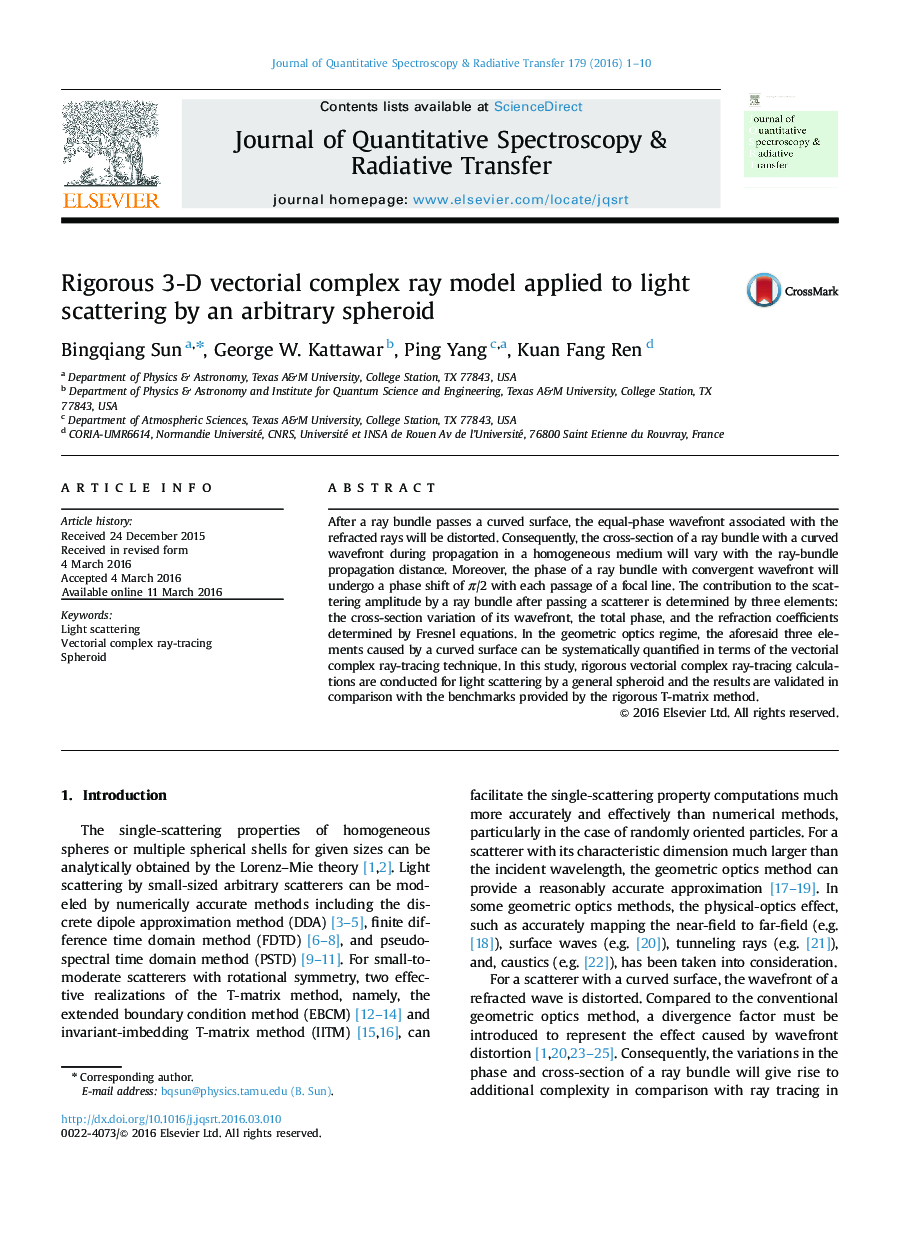| Article ID | Journal | Published Year | Pages | File Type |
|---|---|---|---|---|
| 5427668 | Journal of Quantitative Spectroscopy and Radiative Transfer | 2016 | 10 Pages |
Abstract
After a ray bundle passes a curved surface, the equal-phase wavefront associated with the refracted rays will be distorted. Consequently, the cross-section of a ray bundle with a curved wavefront during propagation in a homogeneous medium will vary with the ray-bundle propagation distance. Moreover, the phase of a ray bundle with convergent wavefront will undergo a phase shift of Ï/2 with each passage of a focal line. The contribution to the scattering amplitude by a ray bundle after passing a scatterer is determined by three elements: the cross-section variation of its wavefront, the total phase, and the refraction coefficients determined by Fresnel equations. In the geometric optics regime, the aforesaid three elements caused by a curved surface can be systematically quantified in terms of the vectorial complex ray-tracing technique. In this study, rigorous vectorial complex ray-tracing calculations are conducted for light scattering by a general spheroid and the results are validated in comparison with the benchmarks provided by the rigorous T-matrix method.
Keywords
Related Topics
Physical Sciences and Engineering
Chemistry
Spectroscopy
Authors
Bingqiang Sun, George W. Kattawar, Ping Yang, Kuan Fang Ren,
